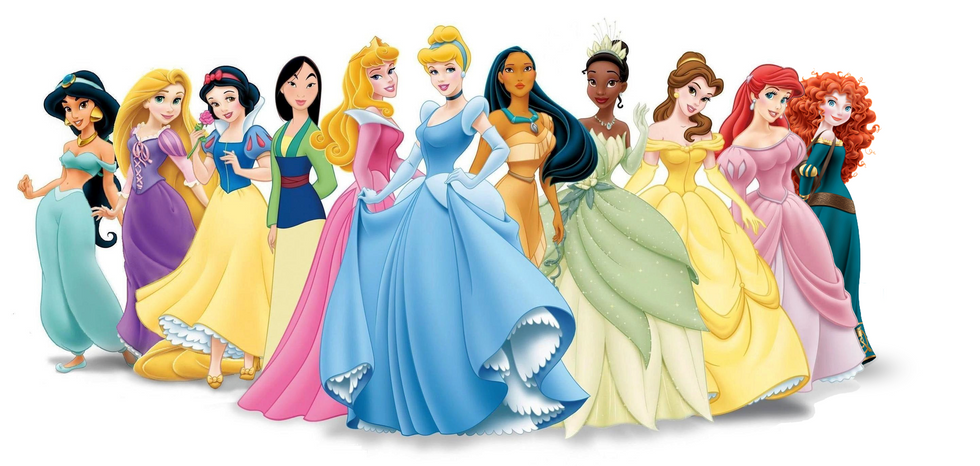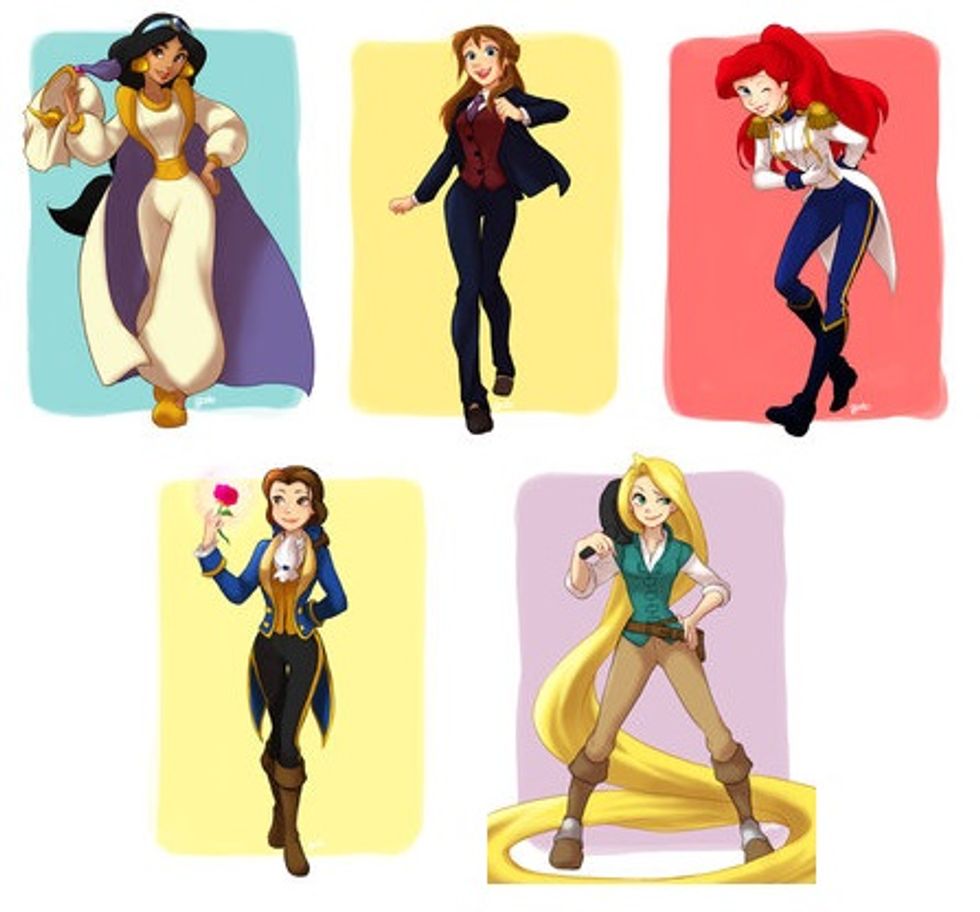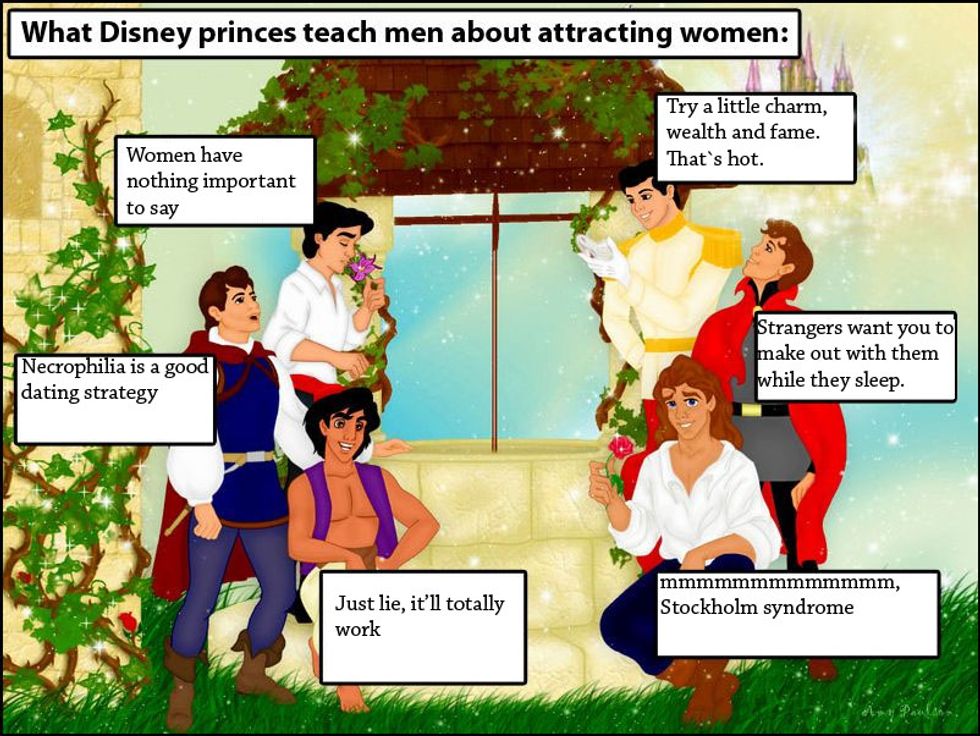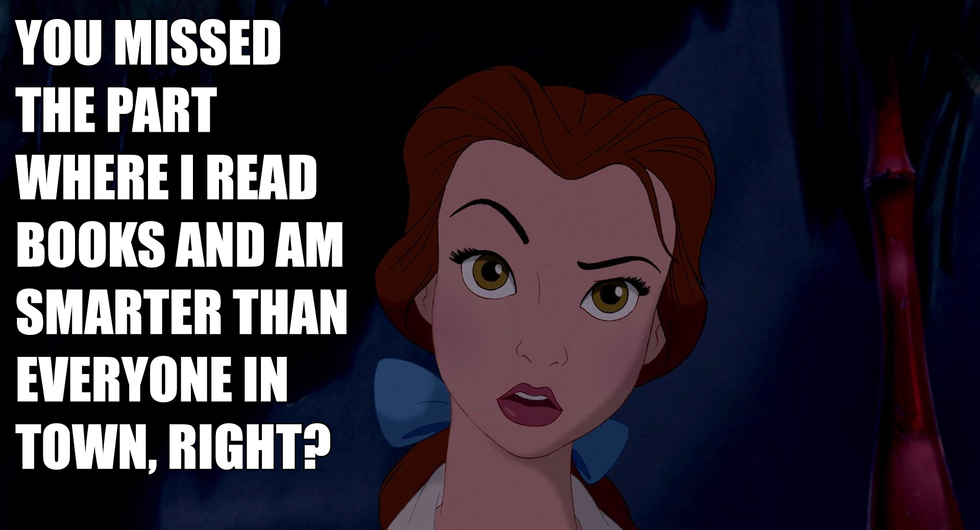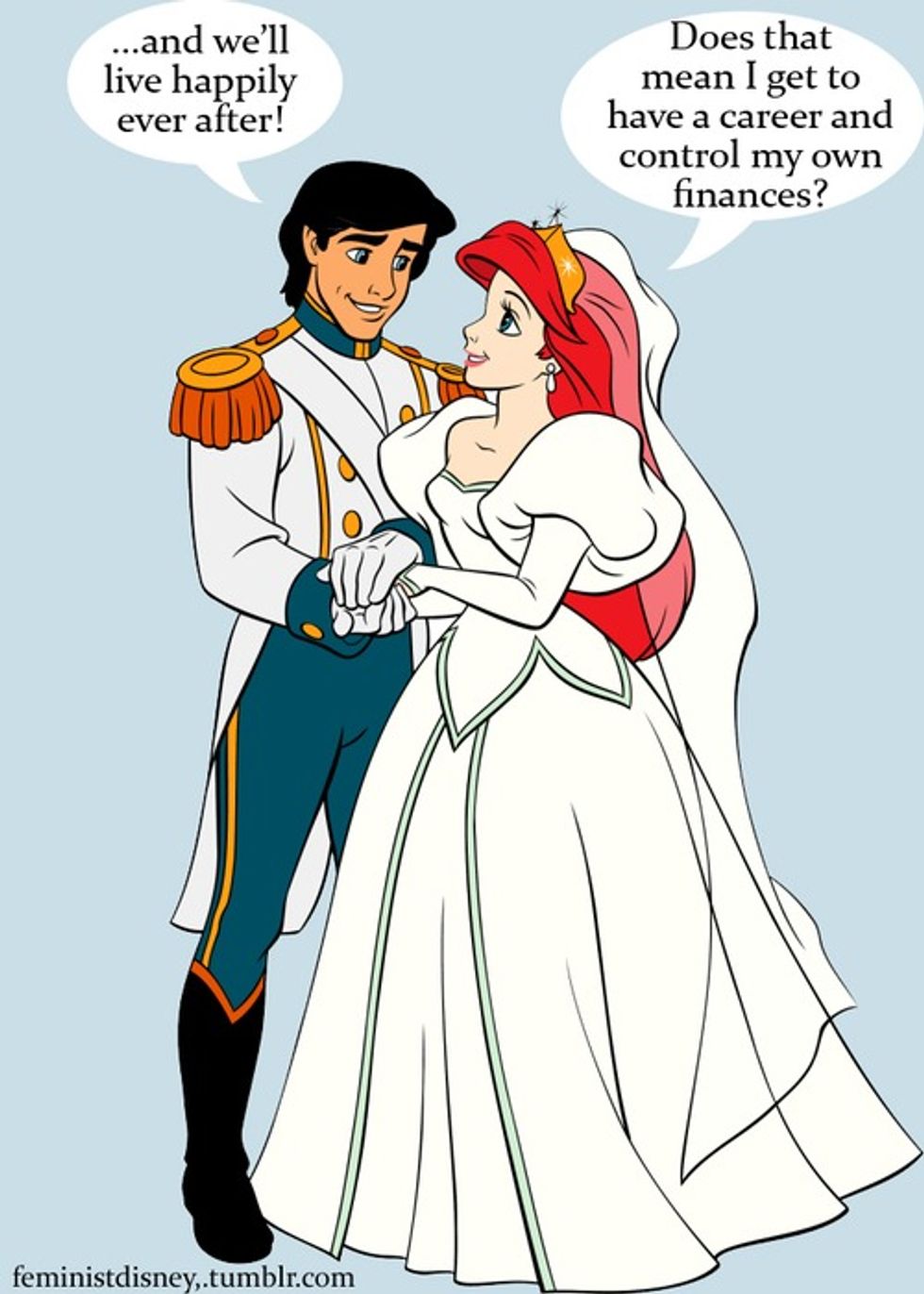Disney movies are beloved by people of all ages throughout the world and are some of the highest-grossing films in the industry. However, there is controversy surrounding these adored movies: the gender roles of the characters. In many Disney movies, female characters are viewed as weaker and inferior to the strong and superior male characters. This inequality is inaccurately teaching youth that there are societal behaviors and expectations for certain genders.
The Women of Disney:
In early Disney Princess movies, the princess always gets her "happily ever after" by marrying her prince who saves her when she is a damsel-in-distress. However, this limits women to have a certain gender role. Why do women need a “happily ever after” that includes men? Why can't women save themselves when in distress?In the past, female Disney characters were characterized by stereotypes: they were weak, more controlled by others, emotional, warmer, tentative, romantic, affectionate, sensitive, frailer, passive, complaining, domestic, and more troublesome than male characters.The classic examples of the stereotypical weak Disney princesses are Snow White, Cinderella, and Sleeping Beauty. Their lives were horrible and then they found men to fix their problems. This kind of message tells girls that they are not strong enough to overcome obstacles and they need men to solve life’s issues.In addition, in "The Lion King," the lionesses are shown to be very weak and they have to wait for Simba to return and save them. This conveys that the lionesses (women) cannot do anything for themselves and have to depend on the lions (men) for their freedom. In reality, lionesses do all of the hunting for the pride, while the lions sit back and look pretty with their flowing manes.
Another stereotype, although not usually focused on, is that Disney women are more troublesome than men. Cruella Deville in "101 Dalmatians," Ursula in "The Little Mermaid," and the Evil Queen in "Snow White and the Seven Dwarfs" are evil and troublesome women. Although they are powerful, they are not powerful in the positive way that women should be seen as — independent and assertive.
The Men of Disney
Males in Disney movies are also viewed stereotypically: they are strong, empowered, the protectors, the providers, self-reliant, tough, aggressive, courageous, humorous, and heroic.For example, in "Aladdin," Aladdin is fearless and survives using his wits, agility and street smarts. Throughout the movie, he fights “bad guys” and defeats a gigantic snake. Aladdin also shows his masculinity by wearing a very revealing vest. In "Snow White and the Seven Dwarfs," the prince rides a horse and brings Snow White back to life with a kiss.
Male characters have been portrayed as masculine and even superior in Disney films.



